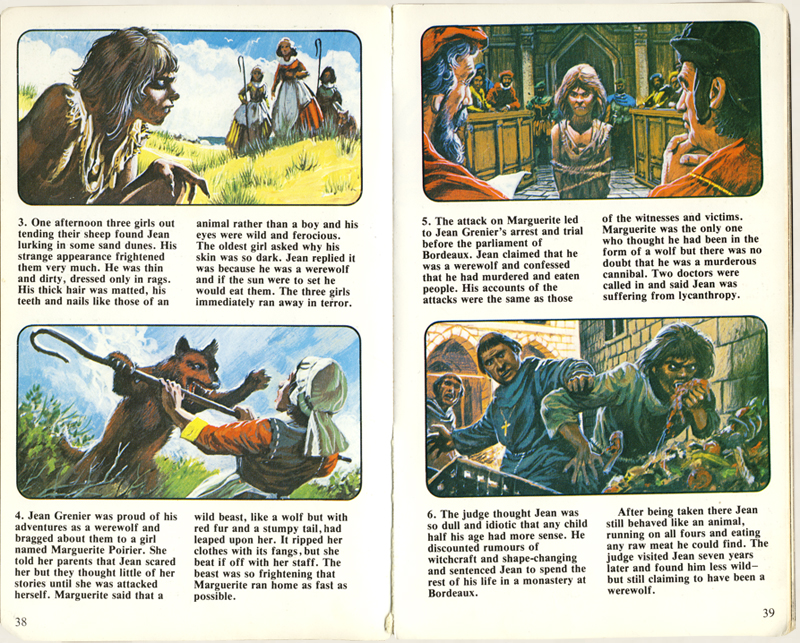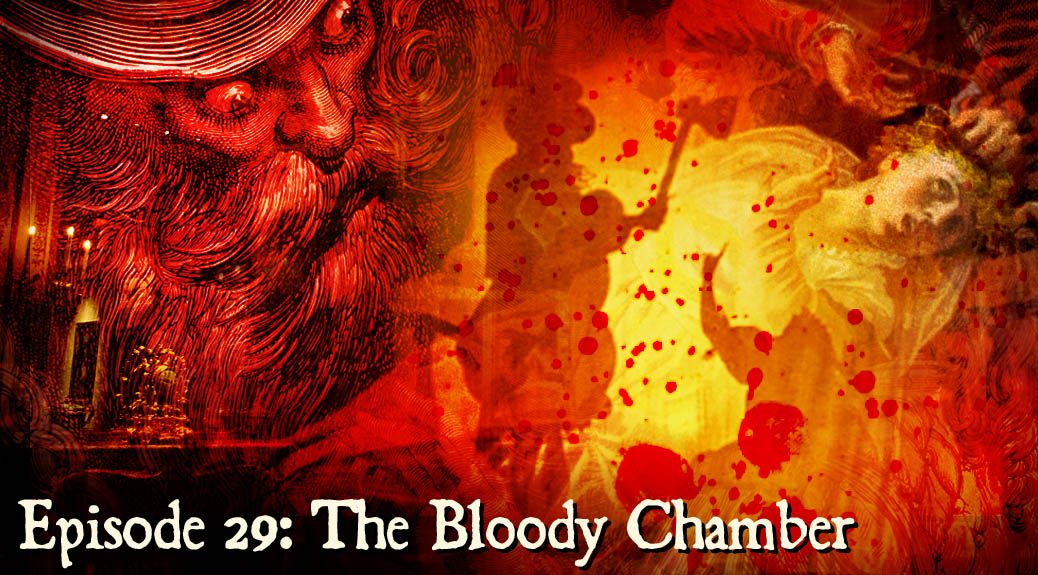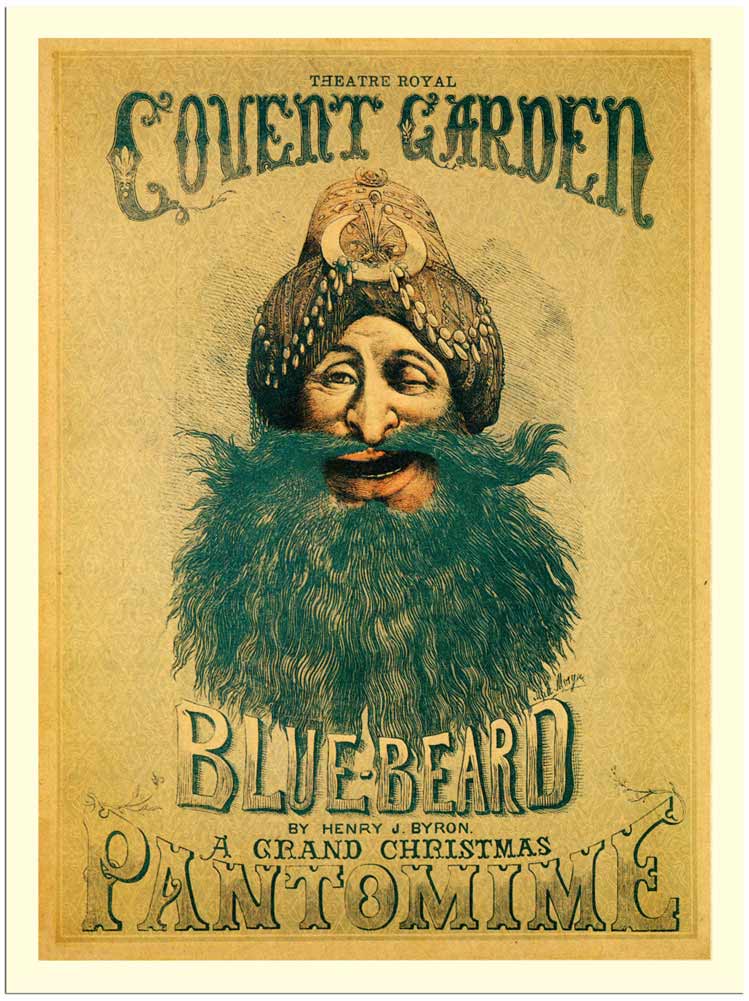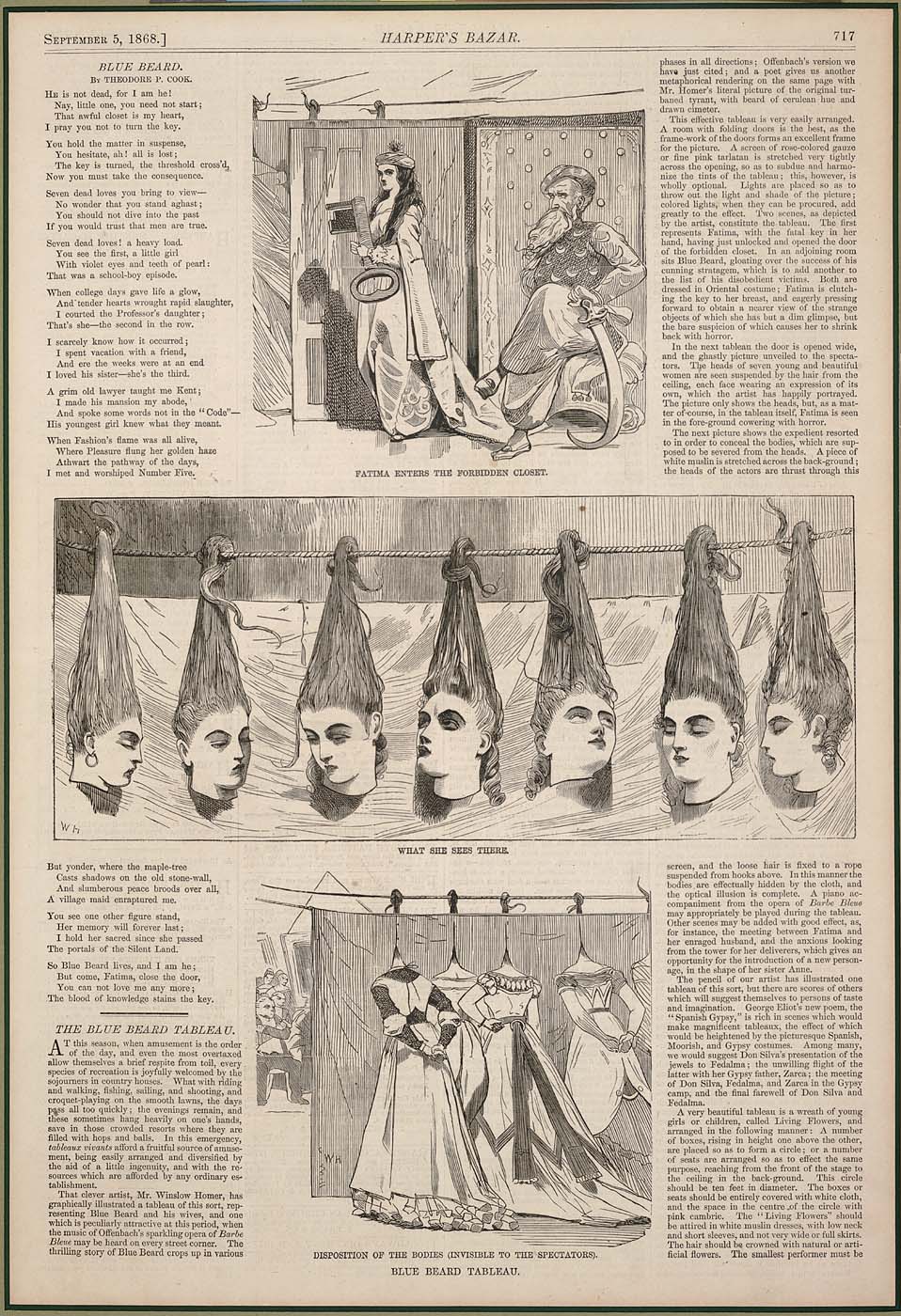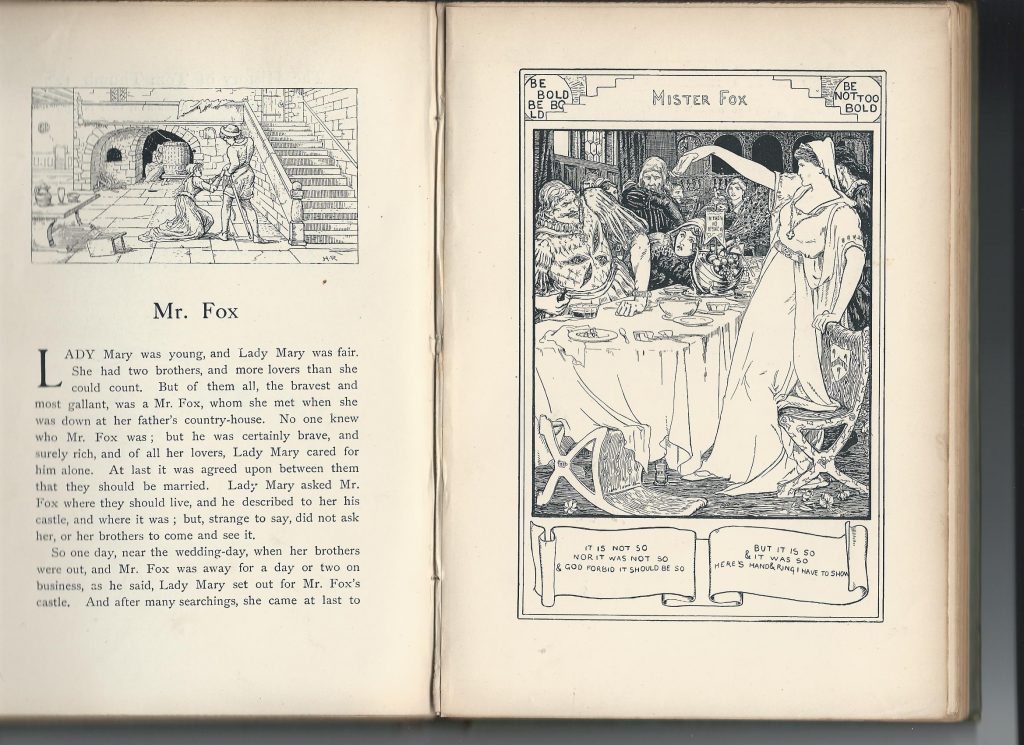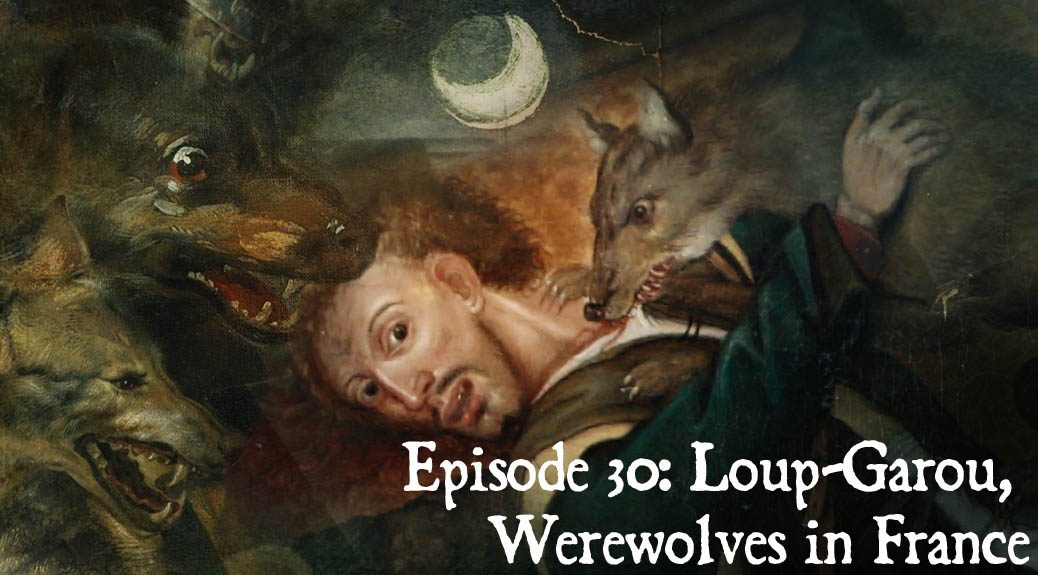
#30 Loup-Garou, Werewolves in France
Podcast: Play in new window | Download (Duration: 39:56 — 36.6MB)
Subscribe: Apple Podcasts | Spotify | Android | Podchaser | RSS | More
The werewolf (Fr: loup-garou) epidemic of 16th-century France forms the core of our show, but we also include some medieval French werewolf tales as well as the legend of a figure connected to both werewolves and Bluebeard.
In our last episode on Bluebeard, I promised to recount a legend that may have inspired Charles Perrault’s story. This would be the story of Count Conomor, or “Conomor the Accursed,” a 6th-century ruler of Brittany. Here the role of Bluebeard’s new wife is played by Trephine, the daughter of a rival count. Through her forbearance, she came to be regarded in local traditions as a saint (therefore the chapel depiction below). Her adventures include interaction with the helpful ghosts of Conomor’s slain wives, decapitation by Conomor (with miraculous cure) and a magic ring The curse upon this wicked count continues into the afterlife, during which he is condemned to roam the countryside in the form of a werewolf.
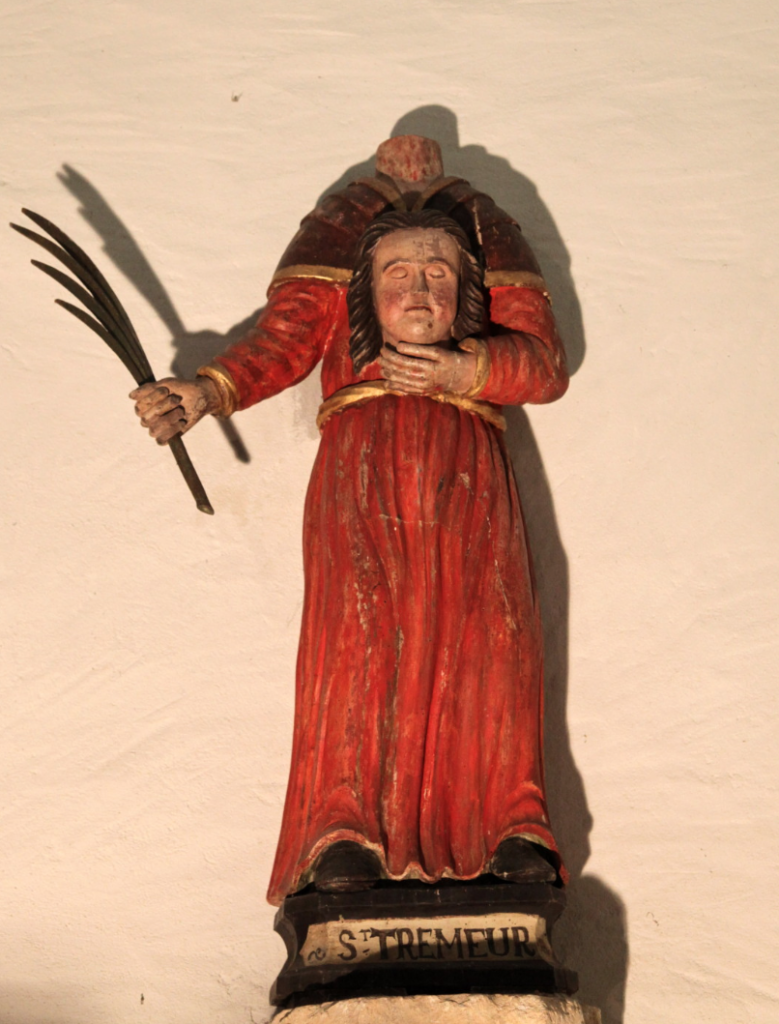
Our next segment looks at some medieval werewolf stories, including the 12-century poem by a Marie de France, “Bisclavret,” in which the werewolf plays a surprisingly sympathetic role, the tale of Sir Hugues de Camp-d’Avesnes, condemned to an afterlife as a werewolf for burning a town in the 1131, and that of the knight Raimbaud de Pulet, who in a fit of despondent madness becomes a werewolf.
The French werewolf epidemic, which between 1520 and 1630, resulted in the execution of more than 30,000 individuals was the result of a link forged between the werewolf and a new, more aggressive attitude toward witchcraft arising in ecclesiastic councils taking place in Basel Switzerland in the 1430s. The first regions in France to begin prosecutions were therefore naturally those adjacent to Switzerland. Many there were overseen by Henry Bouguet, a judge who tried approximately 600 witchcraft cases in the locality. Most of the stories recounted in this episode come from his writings on the subject, while others come from the The Werewolf by highly eccentric English scholar Montague Summers, who was discussed in Episode 1.
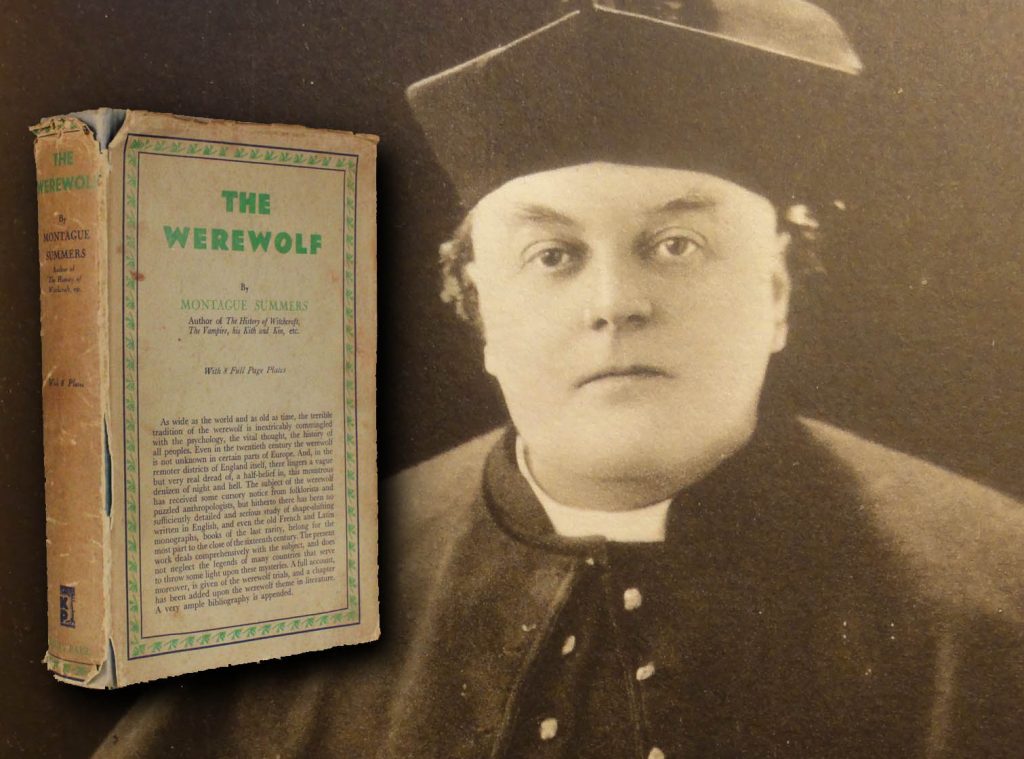
The first of Bouget’s cases examined is that of Michel Verdun, who shortly after a wolf attack in which the beast is wounded is discovered treating a matching wound on his arm. Verdun’s testimony implicated two other men likewise said to transform themselves into wolves, Philibert Montot, and Pierre Bourgot, who provides a lurid testimony including accounts of bloody crimes committed in wolf form, attendance at a witches’ sabbath and being initiated into his wicked ways by a black rider he meets in the forest.
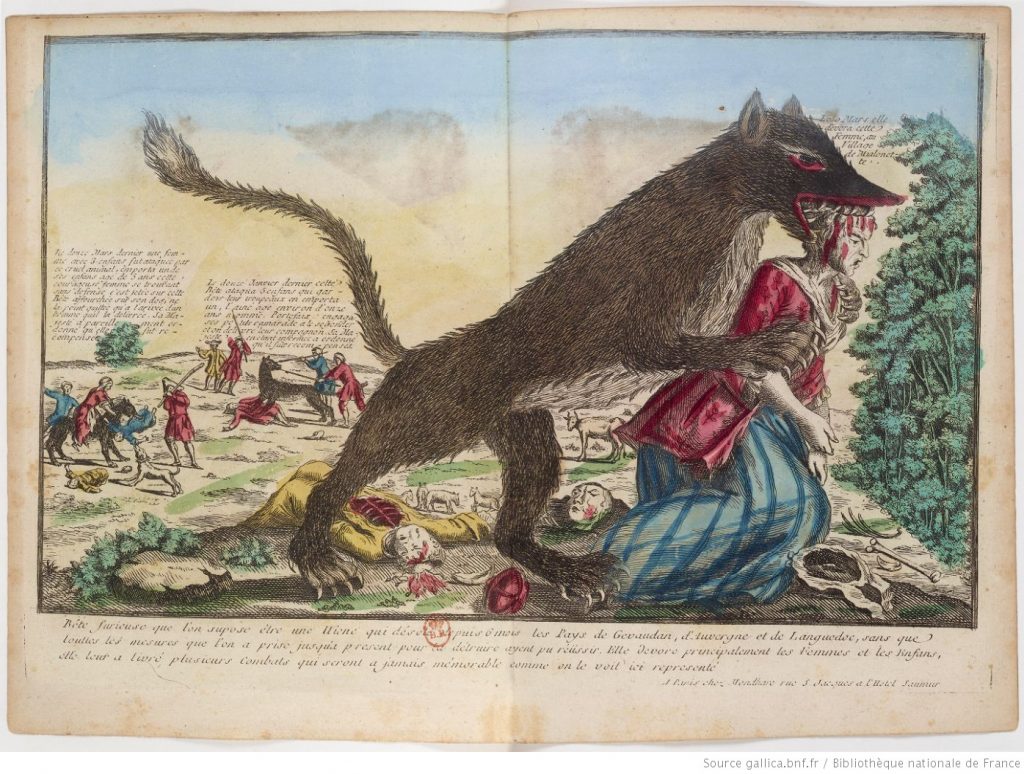
The next case discussed (and judged by Bouget) is that of Gilles Garnier, who also spoke of a forest meeting with a diabolical figure who presented him the magic ointment necessary for transformation. Garnier’s case is interesting in that he brought home human flesh from his werewolf attacks for his wife to enjoy.
Another case in this same area mentioned by Boguet is that of the Gandillons, a whole family of alleged werewolves. It begins with a female werewolf, Perrenette Gandillon, who attacks a brother and sister and is then killed by a mob. Her sister, Antoinette confesses to also being a werewolf and attending a witches sabbath, as do her father and brother. Wilkinson reads for us a colorful description of the wolf-like behavior of the male Gandillons in their prison cells.
Outside of Bouget’s jurisdiction, we find the case of the Werewolf of Chalons, a tailor discovered abducting children and butchering them in his shop. We also hear the story of Jean Grenier from Bordeaux (see the comic below).
The show closes with an account of 20th-century lycanthropy from Grenier’s home town of Bordeaux. When an unnamed assailant confesses to murdering a stranger invited into his home for a meal in 1989, he is examined by prison psychiatrist Michel Bénézech, who makes the diagnosis of “pathological lycanthropy.” The quotes we hear from Bénézech are from the BBC show “The Secret Life of Ghosts & Werewolves.”
